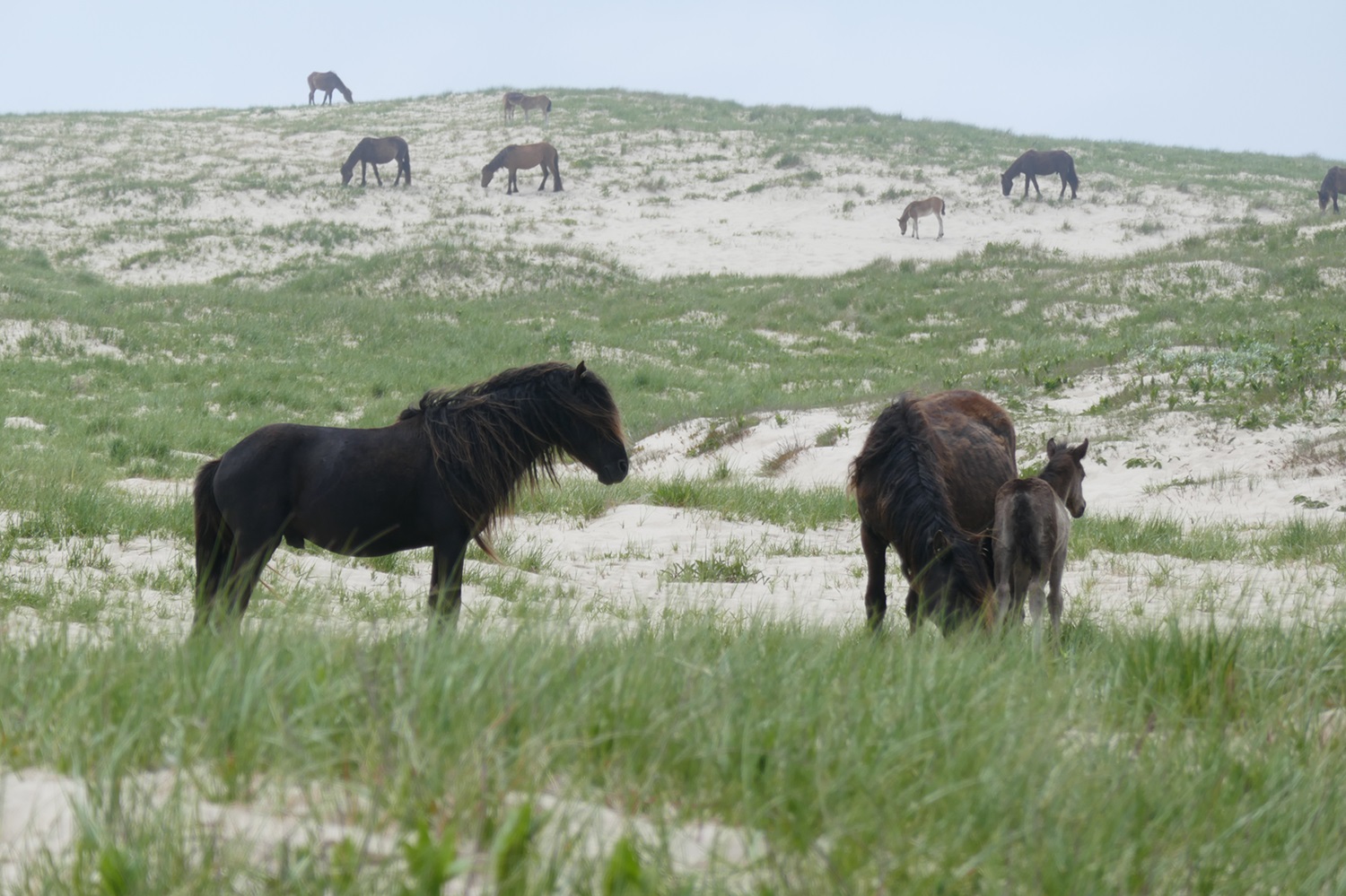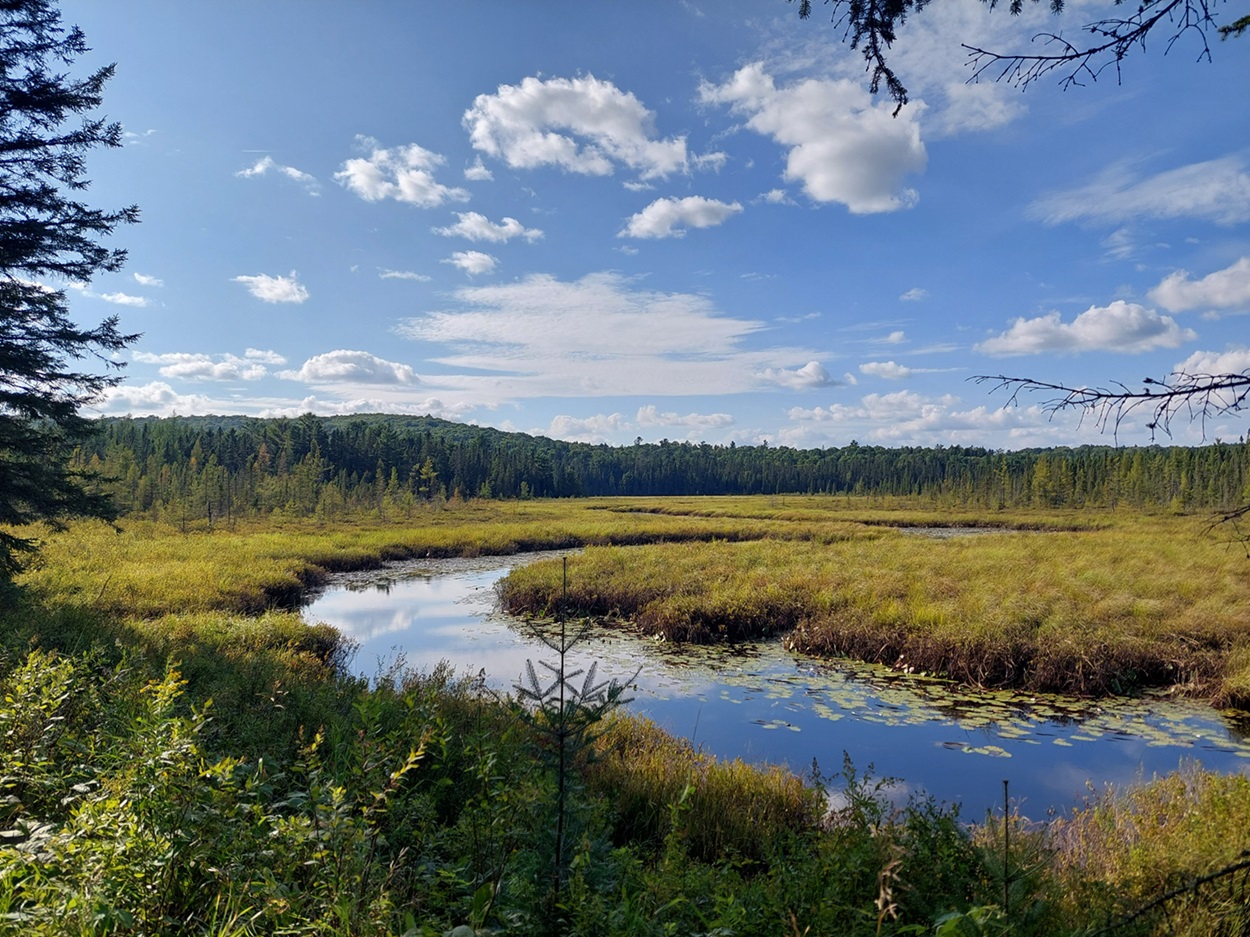Sable Island National Park Reserve, which is located on the unceded traditional territory of the Mi'kmaq, is a narrow strip of sand 290 km southeast of Halifax, Nova Scotia, known for its diverse wildlife. Wild horses, grey seals and unique plant life draw visitors from around the world. This park is known as “The Graveyard of the Atlantic” due to more than 350 shipwrecks off its shores. Due to the remote location of this reserve, visitors can only travel to Sable Island by boat or plane with permission from Parks Canada. Sable Island was designated as a National Parks in 2013 — Canada’s 43rd national park.
Landscape
A remote island on the edge of the continental shelf in the northern Atlantic Ocean, Sable Island is a sandy, crescent-shaped strip of land measuring at 3,400 ha. It is 42 km long and measures only 1.3 km at its widest point. It is covered in fog an average of 127 days a year, which has historically been the cause of many shipwrecks.
While the temperature on the island stays moderate throughout the year, multiple severe tropical storms and winter storms, as well as high winds occur throughout the year. These can damage the landscape by shifting sands, creating dunes and causing sediment loss. The vegetation covering the island aids with reducing this sediment loss, as it acts as a natural barrier against high winds and waves. The matted, deep-set roots of the grasses and heath stabilize the sand dunes and act as nesting grounds for various species.
Wildlife
Sable Island is a utopia for various species, some of which are only found on this island, while others are considered at-risk under the Canadian Species at Risk Act.
Wild horses have lived on Sable Island for approximately 250 years, when they were introduced to the island in the 18th century as an emergency settlement for shipwrecked crews. The horses, along with cows, sheep, goats and hogs, were shipped there and believed to be able to sustain themselves with little human interference. Only the horses survived.
The wild horses live in small family groups called bands, often consisting of one dominant male, one or two mares, and their offspring. Other bands consist solely of young subordinate males seeking mares.
The current population size of the wild horses has varied in recent years between 374 and 590.

Along with the horses, Sable Island is home to the world’s largest breeding colony of grey seals. Due to the island’s location, which is close to good feeding grounds, and lack of on-shore predators, it acts as a safe haven for grey seals as they produce offspring.
Birthing up to around 80,000 pups each winter on the island, the mothers spend the first 16 days of their offsprings’ lives feeding and protecting them, after which they return to the sea and let the pups fend for themselves. As the pups mature, many of them will stay on the island for up to a year.
The wild horses indirectly benefit from the seals’ presence on the island. As the seals bring marine nutrients on shore through their feces and urine, they promote vegetation growth that provides valuable food sources for the horses.
Multiple bird species also call Sable Island home. The Ipswich sparrow nests exclusively on Sable Island. Due to this limited geographic distribution and breeding ground, the bird is listed as a species of Special Concern under the Species at Risk Act.
The Sable Island sweat bee is an endemic species to the island, meaning it is native to the island and found nowhere else in the world. It is a ground-nesting species and is a significant pollinator on the island. There is very little known about the species in terms of population size; however, due to its limited geographic distribution, the bee is listed as Threatened under the Species at Risk Act.
Park Management and Visitor Facilities
As a remote island with limited access to visitation, Sable Island does not have many visitor facilities. The only set of functional, in-use buildings on the island is the Main Station, which is the point of arrival for visitors coming in on planes and boats. Restrooms, drinking water and a gift shop are available there.
For those unable to travel to the island, Parks Canada has launched virtual tours to experience and learn about the island’s significance. Using photos, artwork and 360-degree drone footage, people from all around the world can experience the unique island and learn about the research projects being conducted there.
Indigenous Involvement
Sable Island is on Mi'kmaq land, and Mi’kmaq youth and Elders have created a pledge to encourage future visitors to leave no trace, learn from the delicate and unique environment, and honour the land they walk on.
Mi’kmaq Earth Guardians have also been heavily involved in conservation research projects, primarily involving the Sable Island sweat bee. As Indigenous perspectives have been involved from the early stages of this insect’s research, the project brings together Indigenous ways of knowing and Western knowledge in a principle known as Two-Eyed Seeing. In addition to allowing for a more holistic research method, this approach is expected to foster deeper connections between the Mi’kmaq community and the Sable Island National Park Reserve team.
Did you know?Two-Eyed Seeing or Etuaptmumk is a phrase coined by Mi’kmaq Elder Albert Marshall. According to Cape Breton University’s Institute for Integrative Science and Health, Two-Eyed Seeing means “learning to see from one eye with the strengths of Indigenous knowledges and ways of knowing, and from the other eye with the strengths of Western knowledges and ways of knowing… and learning to use both these eyes together, for the benefit of all.”

 Share on Facebook
Share on Facebook Share on X
Share on X Share by Email
Share by Email Share on Google Classroom
Share on Google Classroom



